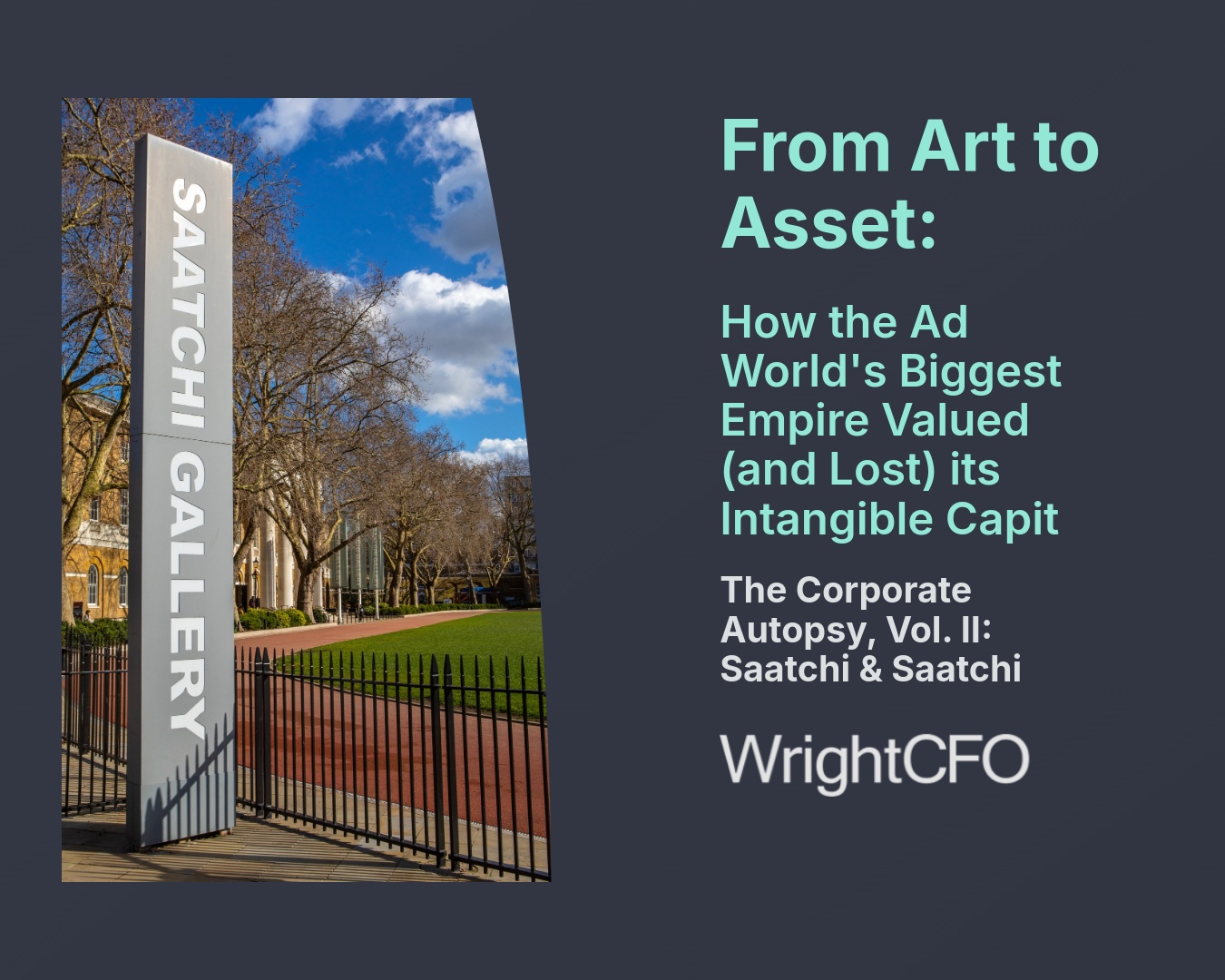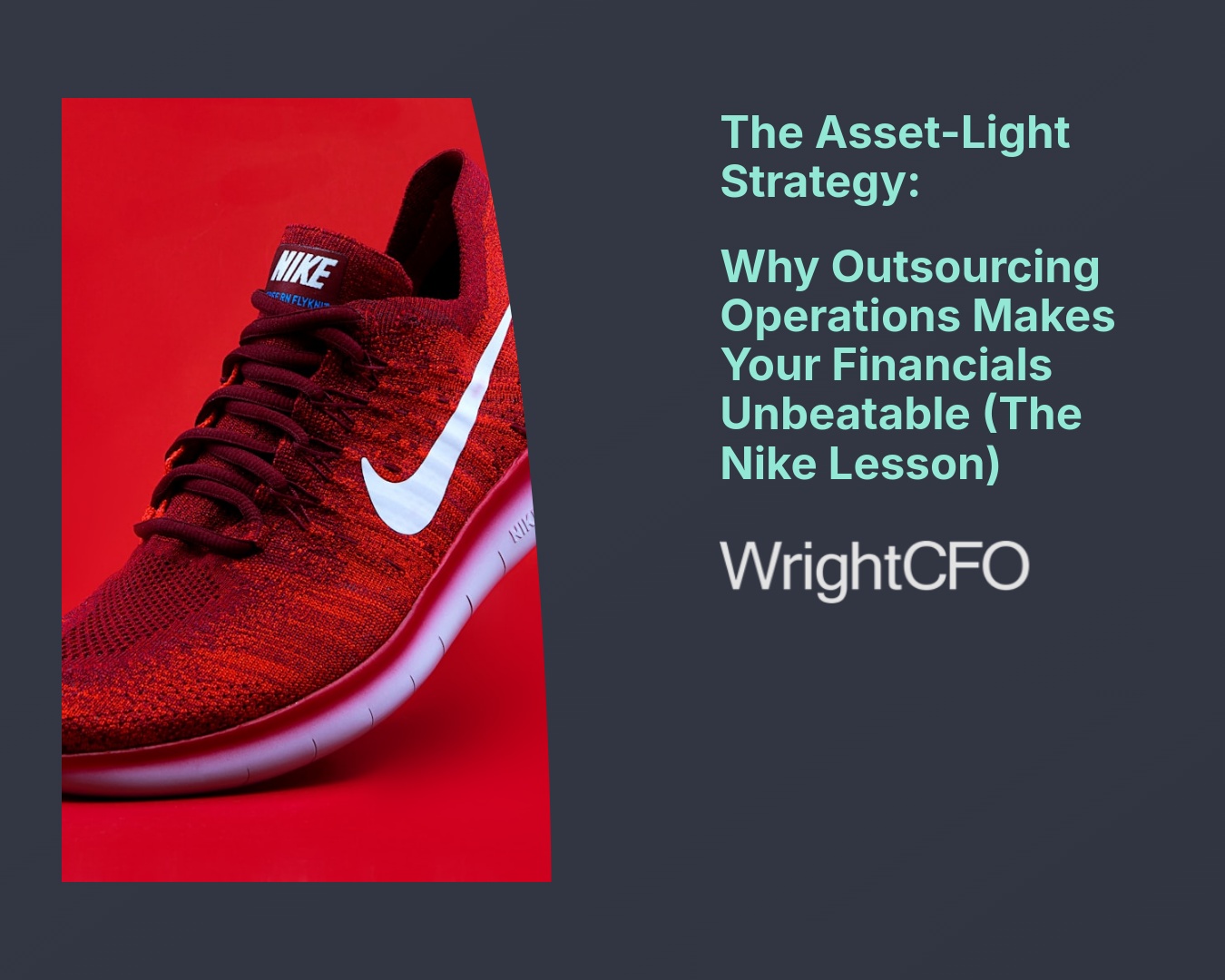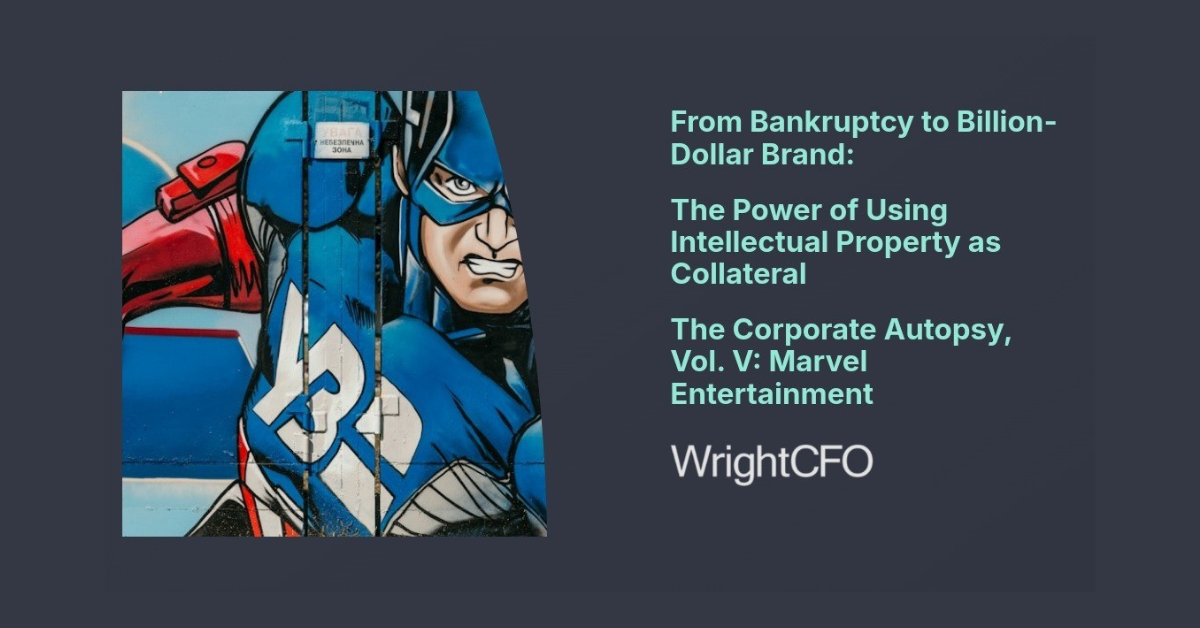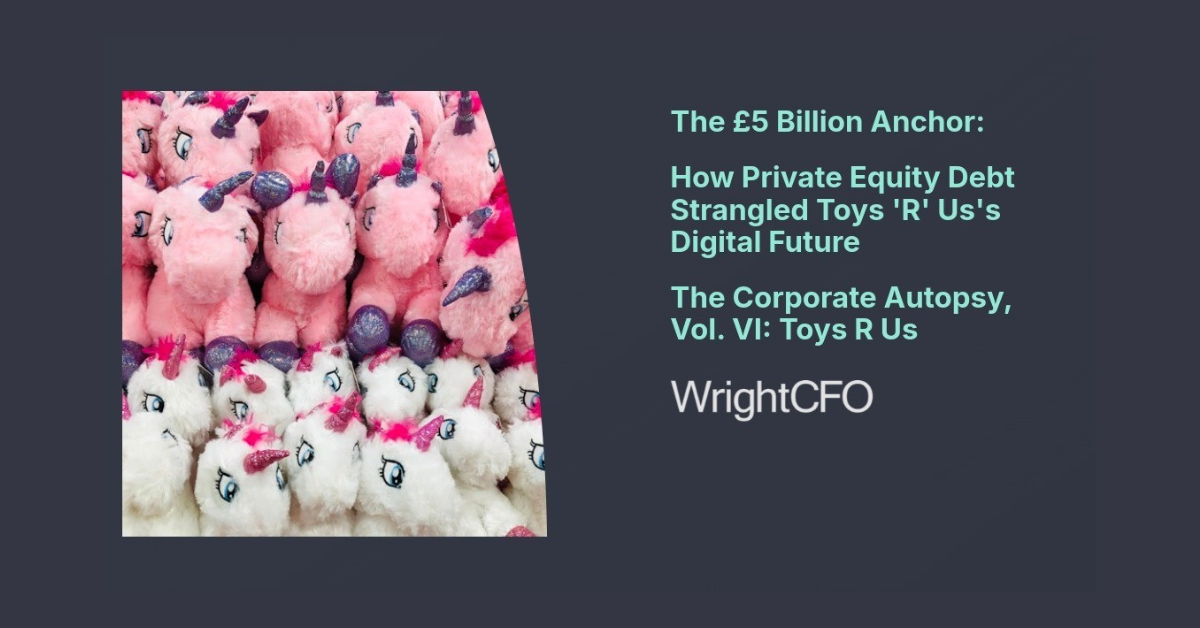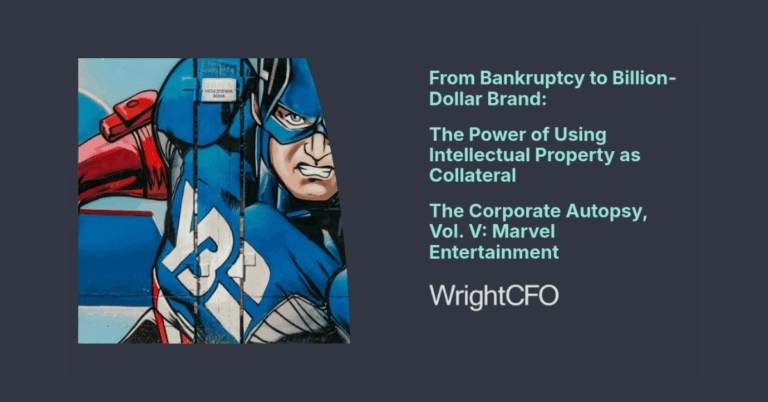From Art to Asset: How the Ad World’s Biggest Empire Valued (and Lost) its Intangible Capital
The Corporate Autopsy, Vol. II: Saatchi & Saatchi
Following our forensic examination of Nike’s asset-light model, we turn to a spectacular British success story—and subsequent crash—that perfectly dissects the greatest financial challenge in the media and creative sectors: monetising and measuring intangible assets.
We are performing the autopsy on one and only Saatchi & Saatchi.
Between the 1970s and 1980s, Maurice and Charles Saatchi built a powerhouse from scratch, transforming a small agency into a global, £9 billion market services giant, largely through aggressive, debt-fuelled acquisitions. Their ambition was immense, but their failure ultimately lay in finance’s inability to keep pace with creativity.
The Problem: When Creativity Outruns the Balance Sheet
Traditional accounting methods are brilliant for measuring factories, stock, and machinery. They are useless at measuring a genius idea, client loyalty, or the value of a brilliant copywriter—the very core assets of a creative agency.
The Saatchi rise was spectacular, but it masked a deeper financial truth: the firm struggled to financially measure what actually mattered: the ROI of creative talent and long-term client retention. This disconnect meant:
- Valuation Chaos: Acquisitions were paid for with huge premiums based on speculative future earnings, rather than grounded, measurable value of the talent being purchased (a theme we explored with the South Sea Bubble).
- Talent as a Liability: Without a proper scorecard for talent value, employee costs were seen merely as a major expense, leading to poor retention and the loss of the true intellectual capital that powered the firm.
The Solution: Financialising the Intangible
After the inevitable crash, the subsequent restructuring involved a key financial pivot: the firm implemented sophisticated planning tools, like the Balanced Scorecard, specifically designed to financialise creativity. They changed their focus to measuring:
- Client LTV (Lifetime Value): Instead of celebrating the short-term win of a new account, they focused financial incentives and metrics on retaining and growing existing relationships. This ensured creative talent was rewarded for building sustainable value, not just chasing quick fees.
- Talent Value: They created financial models to measure the cost and value of nurturing high-performing staff over the long term, recognising that a healthy human capital scorecard directly correlates to profitability.
- Linking Art to Profit: They engineered the measurement systems to link creative output and client satisfaction directly to financial outcomes, closing the dangerous gap between the creative department and the accounts department.
At WrightCFO, our work with media and creative agencies is directly inspired by this lesson. We reject the notion that creativity cannot be financially measured.
We help you, the business owner, turn your creative talent into a financially auditable, high-value asset by:
- Modelling Talent ROI: Providing you with metrics that justify high salaries and retention strategies by linking them to client profitability and retention rates.
- Disciplined M&A: Ensuring any potential acquisition is rigorously stress-tested not just on billings, but on the defensibility and transferability of its creative IP and talent pool.
- Building the Creative Scorecard: Implementing financial systems that reward sustained client relationships and strategic excellence, driving profitable growth instead of debt-fuelled vanity.
The Saatchi story is a dramatic reminder: your creative genius is your greatest asset, but if you cannot financially measure it, you cannot protect it, scale it, or value it.
Further Reading from the Director
This spectacular story of ambition, financial aggression, and the struggle to quantify creative genius is thoroughly documented. For a deeper dive into the Saatchi financial machinations, I highly recommend two key texts:
- The Brothers: The Saatchi & Saatchi Story by Ivan Fallon
- Saatchi & Saatchi: The Inside Story by Alison Fendley
This article was originally published here on LinkedIN on October 15th, 2025.

